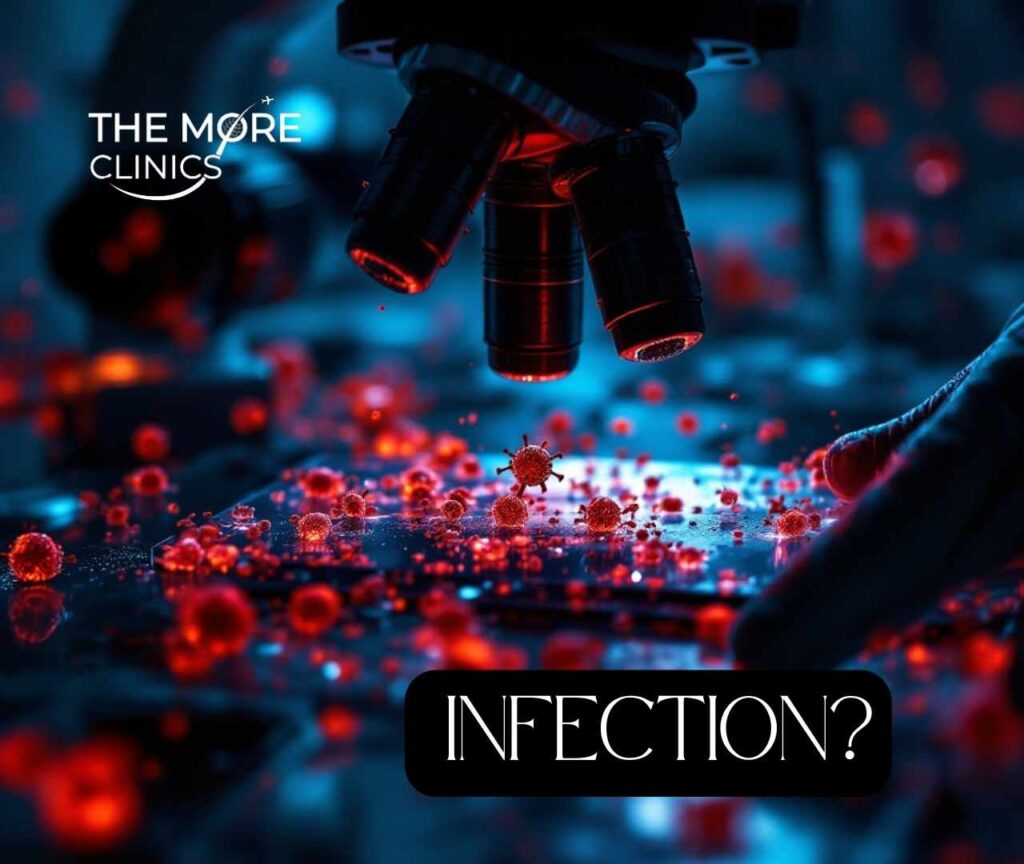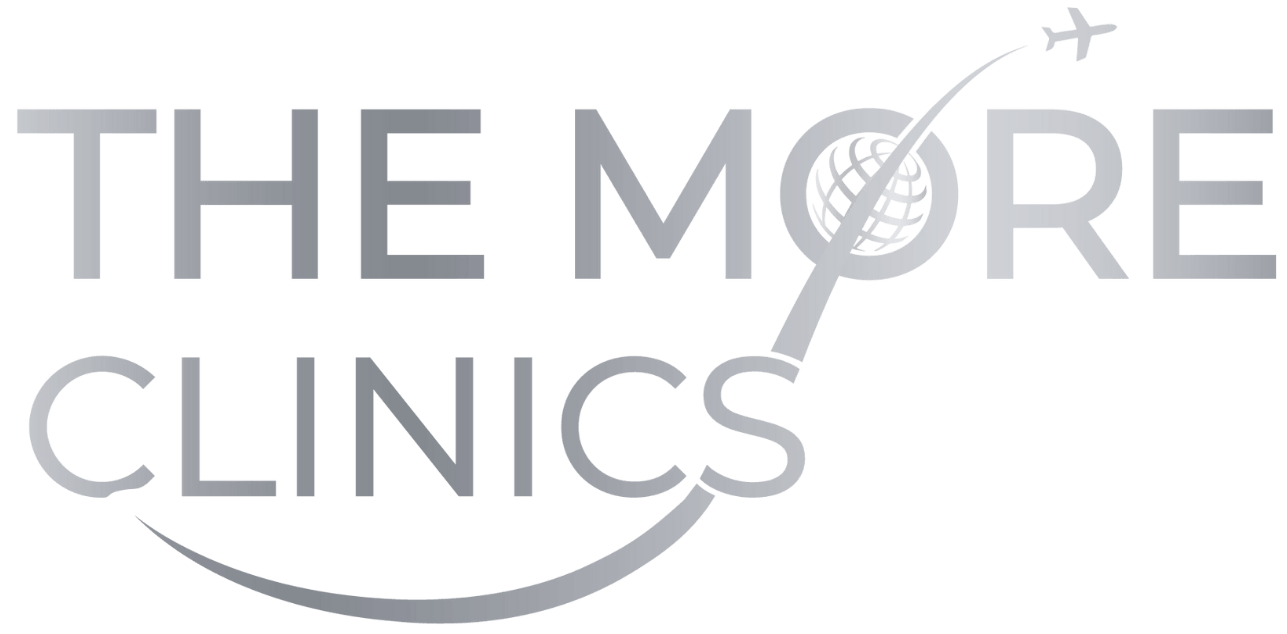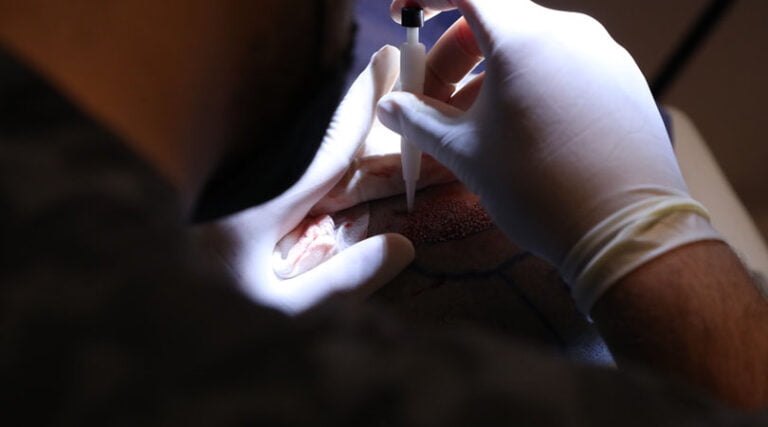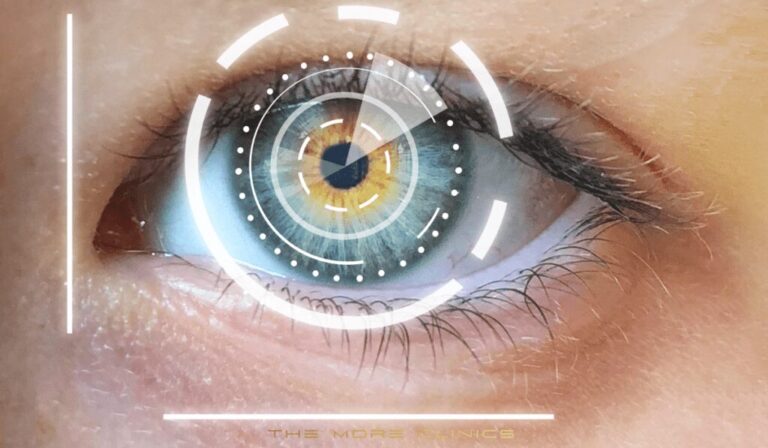What Is an Infection? Understanding the Difference Between Viral and Bacterial Infections
Understanding infections is key to protecting your health. Whether it’s a common cold or something more severe, infections can disrupt daily life and lead to complications if left untreated. Knowing the difference between viral infection and bacterial infection is an important step in choosing the right treatment, as bacteria and viruses require different approaches. For instance, a sinus infection caused by bacteria might even spread and lead to an ear infection if not handled swiftly.

Preventing infections isn’t just about avoiding illness; it’s about safeguarding your overall well-being. With proper hygiene, timely medical care, and an understanding of how infections work, you can reduce risks and maintain a healthier life. Learn more about conditions and prevention strategies on our health archives, and ensure you’re making informed choices.
What is an Infection?
An infection occurs when harmful microorganisms, known as pathogens, invade and multiply within the body. Everyone encounters infections at some point, but understanding how they develop and operate can help you recognize symptoms early and protect yourself from complications.
Understanding Pathogens
Pathogens are microorganisms responsible for causing infections. They come in various forms, each with unique traits and behaviors. Here’s a breakdown of the major types of pathogens:
- Bacteria: These single-celled organisms can thrive in almost any environment. While many bacteria are harmless or even beneficial, others can turn pathogenic, causing illnesses like strep throat, sinus infections, and more. For instance, have you ever asked yourself, “Can sinus infection lead to ear infection?” The answer is yes—bacteria can spread from one area to another when not properly treated.
- Viruses: Much smaller than bacteria, viruses need living cells to replicate. They hijack your body’s cells to make copies of themselves, often leading to illnesses such as the flu or even chronic conditions. A key difference between viral infection and bacterial infection is that viruses generally cannot be treated with antibiotics.
- Fungi: Fungal infections are often seen on the skin, like athlete’s foot, but they can also affect internal organs in rare cases.
- Parasites: Common in underdeveloped areas, parasites such as tapeworms or malaria-causing organisms invade and live off the host body.
Each type operates differently but shares a common goal: survival and reproduction within your body.
The Infection Process
Infections don’t just pop up instantly. They go through a series of stages, starting from exposure to eventual spread across your body. Here’s how it typically unfolds:
- Exposure: This is the point of contact with a pathogen. It can happen through touching contaminated surfaces, inhaling airborne microorganisms, or being bitten by an infected vector like a mosquito.
- Attachment and Entry: Once the pathogen encounters a host (you), it latches onto tissues and finds a way to enter the body. Your skin and mucous membranes act as natural barriers, but cuts or weakened immune responses can make it easier for pathogens to get in.
- Incubation: During this stage, the pathogen starts multiplying. You may not feel symptoms immediately as the infection takes root quietly within you.
- Onset of Symptoms: As the microorganism grows and spreads, your immune system begins to react. Symptoms like fever, fatigue, and localized pain are common as your body works to fight off the invader.
- Spread or Resolution: The infection can either spread to other parts of the body or be contained with treatment or natural immune system action.
Preventing infections often lies in recognizing early signs and maintaining good hygiene to limit exposure to pathogens. Learning more about these processes can help you stay ahead of health complications. For essential insights, check out our Women’s & Men’s Health guide.
Common Types of Infections
Infections can come from various sources, each with its unique causes and symptoms. Knowing the common types of infections can help you recognize early signs and seek appropriate treatment. Let’s break it down into the main categories: bacterial, viral, fungal, and parasitic infections.
Bacterial Infections
Bacterial infections occur when harmful bacteria invade the body, multiplying and causing illness. These microorganisms are everywhere—on surfaces, in the air, and within your body. Common bacterial infections include:
- Strep Throat: Often characterized by a sore throat, swollen glands, and fever.
- Sinusitis: Caused by bacteria in the sinus cavities, potentially leading to complications like ear infections if left untreated.
- Urinary Tract Infections (UTIs): These infections cause frequent urination, burning sensations, and abdominal discomfort.
Symptoms vary based on the type of bacterial infection but often include fever, fatigue, and localized pain. Proper hygiene and timely antibiotic treatment can manage most bacterial illnesses. Learn more about risks linked to periodontal disease, a bacterial infection, in our detailed oral health guide.
Viral Infections
Viruses are much smaller than bacteria and require living hosts to multiply. Viral infections can easily spread through various means, such as droplets expelled when an infected person coughs or sneezes. Common examples include:
- Flu: Symptoms include chills, fever, body aches, and congestion.
- COVID-19: A respiratory virus causing symptoms ranging from mild fever to severe difficulty breathing.
- Cold Sores: Caused by the herpes simplex virus, these blisters appear around the lips and are highly contagious.
What makes viruses distinct is their inability to reproduce on their own—they rely on your cells, which makes them tricky to treat. Unlike bacterial infections, antibiotics don’t work here. Preventative measures like vaccines and good hygiene play a key role in stopping their spread.

Photo by Matilda Wormwood
Fungal Infections
Fungi thrive in warm, damp environments, often affecting the skin, nails, or mucous membranes. However, in some cases, they may attack deeper tissues, posing serious risks. Some common fungal infections include:
- Athlete’s Foot: Causes itching, burning, and cracked skin between the toes.
- Yeast Infections: Often affect the genital area, causing discomfort and discharge.
- Ringworm (Tinea): A contagious infection with a red, ring-like rash on the skin.
Though many fungal infections are minor, they can become severe in individuals with weakened immune systems. To better understand a specific condition, check out our types of hair loss guide, which explores fungal infections like tinea capitis.
Parasitic Infections
Parasites are organisms that live and feed off a host, sometimes causing significant harm in the process. These infections are more common in regions with limited access to clean water and healthcare. Examples include:
- Malaria: Spread by mosquito bites, malaria causes fever, chills, and severe flu-like symptoms.
- Tapeworms: These worms live in the intestines, often resulting from consuming undercooked, contaminated meat.
- Toxoplasmosis: Caused by a parasite found in cat feces and undercooked meat, it’s particularly dangerous for pregnant women.
Parasitic infections can be avoided through proper food preparation, clean drinking water, and insect repellents where necessary.
Understanding these infection types is the first step in identifying symptoms and taking preventative action. By knowing what to look for, you can protect yourself and your loved ones from potentially serious complications.
Symptoms and Diagnosis of Infections
When it comes to detecting infections, understanding symptoms and the diagnostic process is critical. While some signs may be general, others can vary based on the type and severity of the infection, requiring tailored approaches for accurate diagnosis.
Recognizing Symptoms
Infections can present a mix of generic symptoms or specific signs depending on the pathogen and the part of the body it affects. Let’s break down some commonly observed symptoms:
- General Symptoms Across Infections:
- Fever: Your body’s response to fight microorganisms.
- Fatigue: A constant feeling of weakness or tiredness.
- Inflammation: Swelling, redness, or warmth in the affected area.
- Pain: Localized discomfort such as a sore throat or abdominal pain.
- Infection-Specific Symptoms:
- Viral Infections: Think of the flu or COVID-19. Alongside fever, you may notice body aches, chills, and respiratory symptoms like coughing or congestion.
- Bacterial Infections: Common examples include a sinus infection, which often leads to sinus pressure, nasal discharge, and even discomfort that can radiate to the ears. This is why many wonder, “Can sinus infection lead to ear infection?” Yes, bacterial infections can spread if untreated.
- Fungal Infections: Look for skin issues like itching (e.g., athlete’s foot) or redness, especially in warm, moist areas of the body.
- Parasitic Infections: Symptoms like gastrointestinal issues, fever, or skin eruptions indicate parasitic activity within your body.
Recognizing these symptoms early on improves your chances of effective treatment. If you’re unsure about your symptoms, you can explore resources like our diabetes symptoms guide, which discusses overlapping cases, particularly infections driven by underlying conditions.
Diagnostic Techniques
Accurate diagnosis is key to tailoring treatments and curbing infections. Various methods are used, depending on the suspected infection type:
- Physical Examination: Your doctor will inspect any visible signs like rashes or inflammation and may ask about your symptoms’ onset and severity.
- Blood Tests: These can identify markers of infection, such as elevated white blood cell counts or specific antibodies fighting pathogens.
- Cultures: A sample from the infected area (like sputum, urine, or a wound) is analyzed to pinpoint the microorganisms involved. For bacterial infections like sinusitis, this helps determine the right antibiotic therapy.
- Imaging: X-rays, ultrasounds, or MRIs can reveal issues like fluid buildup or abnormal tissue changes. For example, a sinus infection spreading to the ear might be spotted this way.
- Serological Testing: Used to detect antigens or antibodies specific to infections like viral or parasitic diseases.
- Quick Diagnostic Tools:
- For illnesses like COVID-19 or the flu, rapid antigen tests provide results within minutes.
- Blood sugar monitoring may also reveal infections worsening conditions in individuals with diabetes.
Preventive care is equally important. Avoiding contact with infected individuals, maintaining hygiene standards, and updating vaccines should never be overlooked. Check out ways that general health can influence susceptibility to conditions on our Women’s & Men’s Health page.

Photo by Polina Tankilevitch
Understanding symptoms and diagnostic tools empowers you to seek care promptly, helping prevent infections from spreading or evolving into serious conditions.
Treatment Options for Infections
Infections can vary widely in type and severity, so treatment must be tailored to address the specific underlying cause. Some methods target the infection directly, while others focus on alleviating symptoms and supporting overall recovery. Here’s a breakdown of the most common approaches used to treat infections.
Medications
Medications play a central role in combating infections. Depending on the type of pathogen—bacteria, viruses, fungi, or parasites—your healthcare provider will recommend specific drug therapies, such as:
- Antibiotics: These drugs are designed to kill or inhibit bacterial growth, making them essential for infections like sinusitis, strep throat, and certain urinary tract infections. For example, a sinus infection caused by bacteria might need antibiotics to prevent complications like the spread to nearby areas. Curious about whether a sinus issue might escalate further? Learn more about how sinus infections and ear infections can be linked.
- Antivirals: Since antibiotics are ineffective against viruses, antiviral medications are prescribed for infections such as influenza, COVID-19, and herpes. These drugs help slow viral replication and manage symptoms.
- Antifungals: Often used to treat conditions like athlete’s foot or yeast infections, antifungal medications may be applied topically, taken orally, or administered intravenously for severe cases.
- Antiparasitics: Parasites demand a different strategy. Drugs such as antimalarials or anti-parasitics tackle infections like malaria or tapeworms, depending on the culprit.
Medications must be used as prescribed to maintain effectiveness and avoid issues such as antibiotic resistance.

Photo by Anna Shvets
Surgical Interventions
In some cases, medications alone may not be enough to control the infection, especially if it has spread or led to complications. Surgery becomes a necessary option in situations like:
- Abscess Drainage: Infections causing abscesses (pockets of pus) need prompt draining to eliminate the infection source.
- Debridement: For wounds with infected or dead tissue, surgical removal of the damaged tissue can prevent further spread.
- Internal Infections: For conditions like appendicitis or infected prosthetics, surgery may involve removing infected materials or repairing damaged areas.
These procedures not only address the immediate infection but also prevent lasting damage or relapses. Comprehensive infection control practices—like sterilization and post-operative care with antibiotics—minimize risks during surgical treatments. If you’re considering any medical procedure, our team provides infection management insights in our surgical care guide.
Supportive Care
While targeted treatments directly address infections, supportive care lays the foundation for a smoother recovery. These simple yet effective measures help the body heal faster:
- Hydration: Fluids are crucial for keeping the body functioning well, flushing out toxins, and maintaining organ performance, especially with fever or diarrhea.
- Rest: Sleep plays a vital role in allowing your immune system to focus its energy on fighting infections. Overworking your body can intensify symptoms and slow recovery.
- Nutrition: Fueling your body with nutrient-packed meals ensures you have the strength to fight infections. Vitamins and minerals like zinc and vitamin C are especially helpful in boosting immune defense.
These small steps often make a significant difference in recovery time and comfort, especially when combined with direct medical interventions.
Preventing Infections
Infections are a part of life, but taking preventive measures can significantly reduce your risk. By focusing on the right tools, habits, and lifestyle choices, you can help protect yourself and others around you. From vaccines to hygiene, let’s explore the key strategies for infection prevention.
The Role of Vaccines
Vaccines are among the most effective ways to prevent infectious diseases, acting like a preemptive shield before pathogens can attack. They work by training your immune system to recognize and combat specific germs—be they bacteria or viruses—before they can cause harm.
Vaccination programs have successfully eradicated or controlled diseases like polio, measles, and smallpox. These preventable illnesses once caused widespread suffering but are largely a thing of the past thanks to immunization efforts. Staying updated on vaccines for the flu, tetanus, and newer illnesses, like COVID-19, helps reduce community spread and keeps you safer.
If you’re ever uncertain about vaccine schedules or their importance, consult your healthcare provider or check out insights on maintaining overall well-being in our periodontal disease prevention guide.
Hygiene Best Practices
Simple, everyday hygiene habits are your first line of defense against infection. Germs often spread through touch, shared surfaces, and poor sanitation, but a few proactive measures can make all the difference:
- Wash your hands: Use soap and water, scrubbing for at least 20 seconds, especially after using the restroom, eating, or coming into contact with public spaces.
- Sanitize frequently touched surfaces: Think door handles, phones, and countertops. Regular cleaning reduces the chance of pathogen transmissions.
- Avoid touching your face: Pathogens can enter the body easily through the eyes, nose, and mouth.
- Follow respiratory hygiene: Cover your mouth and nose with a tissue or elbow when coughing or sneezing to prevent droplets from spreading.
Taking action here benefits everyone—not just you. For oral hygiene tips that play a big role in preventing localized infections, explore our deep cleaning and scaling recommendations.

Photo by Matilda Wormwood
Lifestyle Choices
Maintaining a healthy lifestyle strengthens your immune system, making it less likely for infections to take hold in the first place. Think of this as creating a fortress for your body: strong defenses lead to fewer vulnerabilities.
- Eat a balanced diet: Foods high in vitamins (like Vitamin C and D), zinc, and antioxidants boost immune function. Whole fruits, vegetables, lean proteins, and healthy fats are must-haves.
- Exercise regularly: Staying active helps improve circulation, which allows immune cells to move more freely throughout your body.
- Sleep well: Your body repairs itself during rest. Aim for 7-8 hours of quality sleep to keep your defenses sharp.
- Stay hydrated: Even mild dehydration can weaken immunity. Keep up your water intake daily.
By focusing on these choices, you can lower your chances of recurring infections and recover faster if you do fall sick. For those working on weight management and lifestyle improvements, explore our resource on easy, effective weight loss.
By integrating vaccines, hygiene, and smart lifestyle choices into your routine, you give your immune system the best chance to thrive and shield you from harmful infections. Prevention is always easier—and far better—than any cure.
The Role of Healthcare Providers like The More Clinics
When dealing with infections, the guidance of knowledgeable healthcare providers is indispensable. The More Clinics stands out as a trusted partner in delivering comprehensive care for identifying, treating, and preventing infections effectively. Here’s a closer look at how providers like The More Clinics play a significant role in safeguarding health.
Expertise in Diagnosis and Treatment
Infections don’t always present with straightforward symptoms. Recognizing the subtleties is where healthcare providers excel. At facilities like The More Clinics, specialists use state-of-the-art diagnostic tools, ensuring precise identification of the infection type—be it bacterial, viral, fungal, or parasitic. This accuracy not only saves time but also prevents unnecessary treatments like the prescription of antibiotics for viral conditions, where they aren’t effective.
Treatment plans are tailored to the individual. For example:
- Bacterial Infections: Antibiotics are carefully selected to target the specific strain. If you’re wondering, “Can sinus infection lead to ear infection?” the answer lies in understanding how bacteria spread in connected areas and addressing it proactively, as experienced providers would.
- Viral Infections: Providers emphasize supportive care, such as antivirals or symptom relief measures, combined with patient education on recovery expectations.
Prevention Strategies
Prevention keeps infections from derailing your health, and healthcare providers are pivotal here. Beyond treating active infections, clinics like The More Clinics stress preventive care through:
- Vaccination: Staying current on vaccines is a cornerstone of preventing diseases. Healthcare providers counsel patients on what’s necessary based on their age, travel plans, and risk factors.
- Education: Knowledge is a powerful defense. Personalized advice on lifestyle choices, hygiene habits, and recognizing early symptoms equips patients to better protect themselves.
For instance, exploring the importance of hygiene in surgical contexts highlights their commitment to infection control measures.
Comprehensive Post-Treatment Support
An infection doesn’t end when symptoms fade. Recovery involves follow-up care and preventing recurrence. Providers like The More Clinics track patient progress, ensuring treatments work as intended. For complex recoveries, such as post-surgical infections, staying attentive to risks like reinfection is key.
This attention to detail also extends to the emotional and educational aspects of care. Many patients find reassurance in facilities that provide consistent support long after the initial diagnosis.

Photo by Max Mishin
By leaning on their expertise, trustworthiness, and patient-centered approach, healthcare providers like The More Clinics not only treat infections but also empower individuals with the tools to prevent them. These efforts underscore their importance in your journey toward lasting health.
Conclusion
Infections are a powerful reminder of how interconnected our well-being is with everyday habits and timely care. Understanding the difference between viral infection and bacterial infection empowers you to make smarter health choices. While symptoms might vary depending on the pathogen, early awareness and action can prevent complications, like asking, “Can sinus infection lead to ear infection?”—a situation that’s entirely avoidable with prompt attention.
Above all, prevention remains the most effective tool at your disposal. Whether through good hygiene, vaccinations, or lifestyle improvements, small efforts make a big difference. For personalized care or more answers to your health concerns, experts like The More Clinics are ready to guide you with trust and precision.
Remember, even when faced with infection, knowledge and proactive steps can help safeguard your health and bring you peace of mind.
Frequently Asked Questions (FAQs)
If you’re feeling overwhelmed by infections, you’re not alone. Many people have common questions about how infections happen, how to recognize them, and what to do if they note potential symptoms. Here, we answer some frequently asked questions to help you stay informed and take the right steps toward health.
What Causes Infections?
Infections are caused by pathogens, which are microscopic organisms that invade the body. The most common culprits include:
- Bacteria: Single-celled organisms that can cause infections like strep throat or urinary tract infections. While some bacteria are good for you, others can make you sick.
- Viruses: Tiny particles that hijack your cells to replicate, leading to illnesses like the flu or COVID-19.
- Fungi: These thrive in damp, warm areas, often causing skin infections like athlete’s foot or yeast infections.
- Parasites: Organisms like tapeworms or malaria that live inside you and feed off your body.
Pathogens are transmitted in various ways. You can catch them through direct contact with an infected person, touching contaminated surfaces, consuming contaminated food or water, or via vectors like mosquitoes.
Preventing infections often requires awareness of how they spread. Good hygiene and timely medical intervention play a big role here, especially with bacterial and viral infections commonly seen in everyday life. To learn more about health essentials, visit our medical and dental blog.
How Can I Tell If I Have an Infection?
The body’s immune response to pathogens often results in telltale symptoms. While these can vary by type of infection, there are some universal signs to watch for:
- Fever and chills: Often your first clue that your body is battling an invader.
- Fatigue: Persistent tiredness can occur as your immune system uses energy to fight the infection.
- Localized swelling, redness, or pain: Indicates inflammation in a particular area, such as an infected cut.
- Other symptoms: Depending on the pathogen, you might experience sore throat, coughing, skin rashes, or gastrointestinal discomfort.
It’s important to not ignore unexplained symptoms, especially if they worsen over time. Early detection often makes treatment simpler and more effective. For more insights on identifying symptoms early, explore our health improvement library.

Photo by Sora Shimazaki
Are Infections Contagious?
Not all infections are contagious, but many are, especially those caused by bacteria and viruses. Contagion usually happens through one of these routes:
- Person-to-person contact: Such as shaking hands, hugging, or kissing.
- Airborne transmission: Coughing, sneezing, or talking releases droplets that can carry pathogens.
- Surface contact: Touching shared objects like doorknobs or keyboards can pass germs.
- Shared items: Using communal towels, utensils, or personal items might spread conditions like fungal skin infections.
To minimize the spread of contagious infections, always practice good hygiene. Wash your hands frequently, avoid sharing personal items, and use respiratory masks if needed. Learning about these steps can help prevent both mild and severe infections.
When Should I See a Doctor?
Sometimes, recognizing when to seek medical attention can mean the difference between a quick recovery and complications. See a doctor if you notice:
- Symptoms that worsen quickly or last more than a few days without improvement.
- Very high fevers (above 102°F).
- Severe localized pain or swelling that doesn’t improve.
- Unusual redness or pus, which may indicate bacterial involvement.
- Trouble breathing, chest pain, or dizziness.
Conditions like a bacterial sinus infection, for example, can escalate and even spread to other areas. Ever wondered “Can sinus infection lead to ear infection?” The answer is yes—untreated infections can migrate to adjacent areas, creating new issues. Don’t wait for seemingly mild symptoms to spiral. By leveraging expertise and prioritizing compassionate care, The More Clinics ensures you get effective treatment. Learn more about their patient services through their trustworthy healthcare resources.
Stay mindful of symptoms and take steps to protect yourself. Infections can often be minimized or avoided altogether with the right approach.






